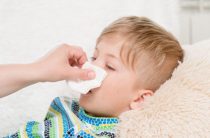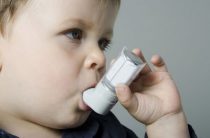Allergies in children are quite common. This is facilitated by the immature immune system of the child, which can react extremely sharply to various environmental substances. As they grow older, many cases of allergies in children are reversible.
Often, children develop food intolerances. This is due to the gastrointestinal tract, which is not able to fully process the components of incoming food. This leads to the fact that the unprocessed components of the products appear in the blood of the child, which irritate the immune system.
How to treat allergies in children?
First, it is necessary to immediately notice that any (even the most insignificant) appearance of symptoms of the disease in a child should serve as a reason for an immediate appeal to the appropriate specialist. The treatment of allergies in children is carried out by such doctors as: an allergist, an immunologist, a dermatologist. In some cases, assistance from other specialists may be required.
Principles of treatment of allergies in a child:
- Competent diagnosis of the disease;
- The use of medicines and their dosages, taking into account the age of the patient;
- Mandatory preventive measures.
Drugs for the treatment of allergies in a child
Various medicines that are used to treat this disease are sold in pharmacies without a prescription. But their availability for purchase should not mislead you. They are by no means intended for self-appointment. Medicines should be used exclusively for medical purposes, as well as in compliance with all instructions assigned to them.
Treatment of allergies in children occurs with the use of various drugs. They can be used both in the form of tablets, drops, sprays, syrups, and in the form of injections. The choice of a specific drug, as well as the form of its use, depends both on the severity of the disease and on its manifestations (allergic rhinitis, skin rash, bronchial asthma, etc.).
Antihistamines
First of all, when it comes to treating allergies in children, antihistamines are prescribed. Their effectiveness is due to the suppression of the hormone histamine, which is responsible for the development of allergy symptoms.
Diphenhydramine is one of the first drugs that was used to relieve allergy symptoms. It has the ability to induce drowsiness. In the treatment of allergies, it can also be used as a sleeping pill in case the disease disturbs the child's sleep.
Diazolin is also a rather old antiallergic drug. It is often used to treat allergies to insect venom, plant pollen, or house dust. Very rarely causes drowsiness, which in most cases is easily tolerated. May cause unwanted side effects from the gastrointestinal tract.
Suprastin is one of the most commonly used agents for the treatment of allergic diseases. Overall, fairly safe and well tolerated. It can be prescribed to children already in the first months of life.
Claritin is a highly effective remedy that has a minimum of side effects. Unfortunately, its use has an age limit of up to two years.
Cetrin is a modern remedy for the treatment of allergies. Side effects are minimal. Not used to treat allergies in children under 6 years of age.
Mast cell membrane stabilizers
Mast cells are special immune cells that are directly involved in the processes of the immune response to the penetration of the allergen. Mast cell membrane stabilizers are substances that prevent the release of biologically active compounds into the blood by mast cells that are involved in the development of allergic reactions.
These drugs are used in the form of tablets, drops, sprays for the eyes, nose and ears. The choice of form for treatment depends on the specific allergic manifestations, as well as their severity. This group of drugs is more effective for the prevention of the disease. They are often used to treat seasonal allergies. In this case, the course begins a few months before the expected flowering.
Sodium chromoglycate
This is one of the first drugs of this group, which began to be used for the prevention of allergic diseases. The action of the drug is based on inhibition of the release of hormones into the blood that provoke allergic reactions.
In addition to the standard for all mast cell stabilizers, sodium chromoglycate also reduces the manifestations of bronchial asthma, which is also a frequent companion of allergic diseases. Overall, it is a highly safe drug with few and infrequent side effects.
Sorbent preparations
Preparations. having sorbing functions are used to treat food allergies in children. Thanks to their use, the fastest removal of the allergen from the gastrointestinal tract is achieved. Although they do not directly affect the mechanisms of allergic reactions, their use can prevent or reduce the negative consequences of contact with the allergen.
One of the most popular sorbents is activated carbon. In modern pediatric practice, more modern drugs are used: enterosgel, polysorb, etc.
Antiallergic ointments
If the disease in a child has skin manifestations, then special ointments are used to treat it, which help relieve itching, eliminate skin rashes and irritation, and also remove inflammation.
Ointments containing corticosteroids (cortisone ointment, dexamethasone, adventan, elocom, flucinar, etc.) should only be used as directed by a doctor. Although they are highly effective remedies for eliminating allergic skin reactions, their improper use can have adverse consequences not only for the health of the child's skin, but also for the whole organism. They are prescribed only when other drugs have been ineffective.
If a child has rashes in the space around the eyes, then special ophthalmic corticosteroid ointments should be used. Delicate skin around the eyes
Pantothenic acid-based ointments are also used to improve the healing processes of the skin and its hydration. These agents include the well-known panthenol and bepanthen.
Treatment of allergic rhinitis and conjunctivitis
Medicines that are prescribed in this case are used to relieve the symptoms of the disease. In most cases, these allergic manifestations go hand in hand in a child, which is why doctors also call them allergic rhino-conjunctivitis.
Often I use vasoconstrictor drugs to relieve redness of the eyes and dilate blood vessels. But these funds in no way affect the mechanism of the development of the disease and are used only in the short term to relieve acute forms of the edematous process. Their use for more than five days in a row contributes to the development of drug dependence.
Antihistamines are a mandatory item for the treatment of allergic rhino-conjunctivitis in children. Their use allows to achieve a reduction or complete elimination of the symptoms of the disease.
Corticosteroids are prescribed in case of severe forms of the disease. They are also effective in bronchial asthma. Especially in cases where it is allergic in nature.















